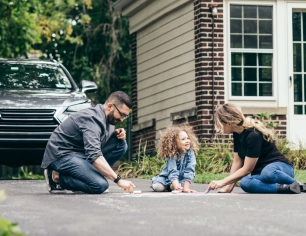What is liability insurance coverage?
Liability insurance coverage protects you financially if you're responsible for someone else's injuries or property damage. Liability coverage comes standard with most vehicle and property insurance policies, including auto and homeowners insurance. For car insurance, you may see this coverage referred to as auto liability coverage. For property insurance, it's usually referred to as personal liability coverage.
Explore Progressive's editorial standards for Answers articles to find out why you can trust the insurance information you find here.
What does liability insurance cover?
Liability coverage may apply in a variety of situations where you're liable for someone else's injuries or damaged property. Here are some examples of what liability coverage may cover, broken out by type of insurance:
Vehicle insurance (including car, motorcycle, RV, boat, and others)
- Injuries you cause to someone else while driving
- Damage you cause to other vehicles while driving
- Damage you cause to someone else's property, such as a mailbox or street sign
- Legal expenses for accident-related lawsuits
Property insurance (including homeowners, condo, renters, and others)
- Others' injuries that occur on your property that you're responsible for
- Damage to other people's property that you're responsible for
- Legal expenses for lawsuits related to injuries or property damage
Keep in mind that liability insurance coverage doesn't cover your own injuries or damaged property. It only applies in situations where you're legally responsible for someone else's damages.
Watch our guide to liability coverage for some quick snippets on how it works, what it covers, and more:
How much liability coverage do I need?
Typically, you should select a limit that matches or exceeds your total net worth. This way, your assets are well-protected if you're legally responsible for someone else's injuries or property damage. Learn more about choosing liability coverage limits for vehicle or property insurance:
Pro tip:
Liability coverage limits for different types of vehicles are typically represented by three numbers, e.g. 25/50/25. These numbers represent how much you're covered for bodily injury per person ($25,000), bodily injury per accident ($50,000), and property damage per accident ($25,000). For personal liability coverage, you select one total limit, typically ranging from $100,000 to $500,000.
What about business liability insurance?
Liability insurance can also be purchased by business owners. This coverage is typically called "general liability insurance" and should be purchased separately from any personal vehicle or property insurance. It's designed to protect businesses from claims related to others' bodily injury, property damage, and more. This coverage can be purchased separately, or it may be combined in a business owners policy (BOP).
If you're a business owner, learn more about what general liability insurance covers.
Do I need liability insurance?
To drive a car legally, nearly every state requires car liability insurance. And you're typically required to carry the same amount of liability coverage on your motorcycle insurance and RV insurance policy as you do on your car insurance policy.
There are no state property insurance requirements for personal liability coverage. However, mortgage lenders typically require borrowers to purchase homeowners insurance, which includes personal liability coverage. Some landlords and property owners may require you to carry renters insurance, which also includes personal liability coverage.
Even if you aren't required to carry some form of liability coverage, it's worth considering for the peace of mind it can offer.

Join the millions of customers who trust Progressive









